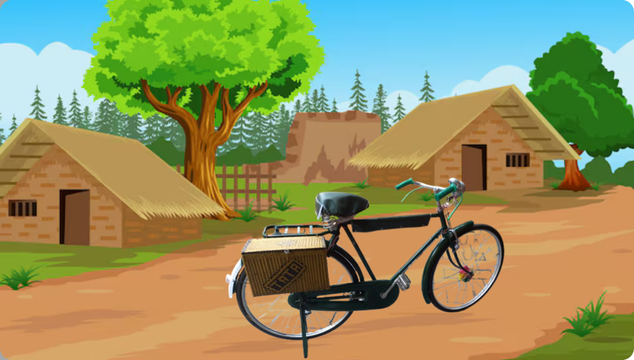In a world rapidly shaped by modern conveniences and fleeting trends, certain objects endure not because of their price or popularity but because of the stories they hold. One such object is the bicycle I use to this day—an English Raleigh model that has traversed time, towns, and generations.
It is not merely a mode of transport but a cherished inheritance, a living legacy of the pre-Independence era, and a witness to the ever-changing landscape of our lives.
My father purchased this bicycle, the late Sri M. Pankajakshan Nair, in June 1946, just over a year before India attained independence. At the time, he was employed with the Electricity Department under British administration. The bicycle was imported from England, a common practice during the British colonial period when certain government departments facilitated access to quality foreign goods for their employees.
The Raleigh brand, founded in Nottingham, England, in 1887, was one of the most respected and reliable bicycle manufacturers in the world. Known for its robust design, it symbolized resilience, efficiency, and endurance—all qualities my father admired.
The structure of this Raleigh bicycle itself is a marvel. Built with stainless steel, its frame, handle, and fittings have withstood the test of time. The screws and nuts, made of brass, continue to shine with minimal care. Apart from regular replacement of tires and basic cleaning, the bicycle has required no major repair or overhaul in nearly eight decades. In a time when we are used to disposable consumer products, this bicycle stands as a reminder of a different philosophy, where things were built to last and cherished with pride.
The story of how it reached India and eventually our home is no less fascinating. In pre-Independence India, cycles were not manufactured domestically in large numbers.
Imported bicycles, especially from England, were considered premium commodities and often imported for senior officers or as part of departmental procurement. For my father, it wasn’t just about owning a bicycle; it was about moving with purpose, reaching remote substations, and responding to power-related emergencies across Kottayam and Ernakulam districts. This two-wheeled companion accompanied him on every official transfer across more than twenty different towns and villages.
Each place the bicycle went added a new memory to our family’s life. I still recall my father's stories of narrow mud paths, flooded roads during monsoon, and how he would rely on this sturdy vehicle to reach his post on time. One such unforgettable incident occurred in Perumbavoor in 1970. During a particularly intense monsoon, the bicycle’s steel dynamo, used to power its headlamp, was stolen. It caused great distress, not just because of its value but because of the trust and bond my father had with the cycle. With local support and persistent search, the dynamo was recovered within two days, restoring not just the bicycle but also our faith in community spirit.
Owning a bicycle back then also meant adhering to regulations. Like motor vehicles today, bicycles require a license. My father maintained it meticulously, ensuring annual renewals.
This document—delicately preserved in our home—now serves as a symbol of both civic responsibility and personal attachment. Alongside it are faded black-and-white photographs of the bicycle in its prime, parked against ancient compound walls, near government offices, or simply standing tall outside our home.
When I eventually took over the bicycle, it was more than just a hand-me-down—it was a rite of passage.
My first ride was an emotional moment: balancing on the sturdy frame, I could feel the presence of my father’s experiences guiding me. Under his watchful eye, I learned to pedal with purpose. Over the years, the bicycle became my trusted companion too, taking me to work, errands, and quiet rides through the lanes of Edappally.
This bicycle has also been a silent bridge between people. Neighbours have borrowed it for quick trips; friends have admired it, amazed at its history and condition; even strangers have stopped me on the road to ask about its make and story. It is not unusual for someone in the locality to refer to it as “the old English cycle.” For many, especially elders in the community, it evokes nostalgia, reminding them of simpler days, where pride lay in preservation rather than constant replacement.
As time marched forward, the world changed around this bicycle. Sleek motorbikes came and went, cars replaced cycles on busy roads, and even electric scooters began to dominate the urban transport scene. But my bicycle stood quietly, unchanged. Every time I look at it, I am reminded not just of its age or endurance, but of the values it represents—discipline, utility, emotion, and heritage.
It is rare to find a machine that operates without fail for more than seven decades, rarer still to find one that continues to evoke affection and reverence. The Raleigh bicycle is more than a relic—it is part of our family history. It reminds me of my father's integrity, the hardships of post-Independence life, and the quiet dignity of holding onto something not for its market value but for its memory.
Today, as I roll through familiar roads on this vintage companion, I feel a connection with the past that few objects can provide. In a fast-moving world, this bicycle teaches patience. In an era of fleeting trends, it teaches loyalty. In the age of throwaway culture, it stands for continuity.
And so, this humble cycle continues its journey—not just across roads, but through time and memory.
Authored by
Nandakumar K. P., (Section Officer (Retd.), Spices Board)
Radha Mandiram, Manimala Road,
Edappally P. O., Cochin – 682 024
Mob: 8547125089 / 9496925089 (W/App)
Email: nandank84@gmail.com
